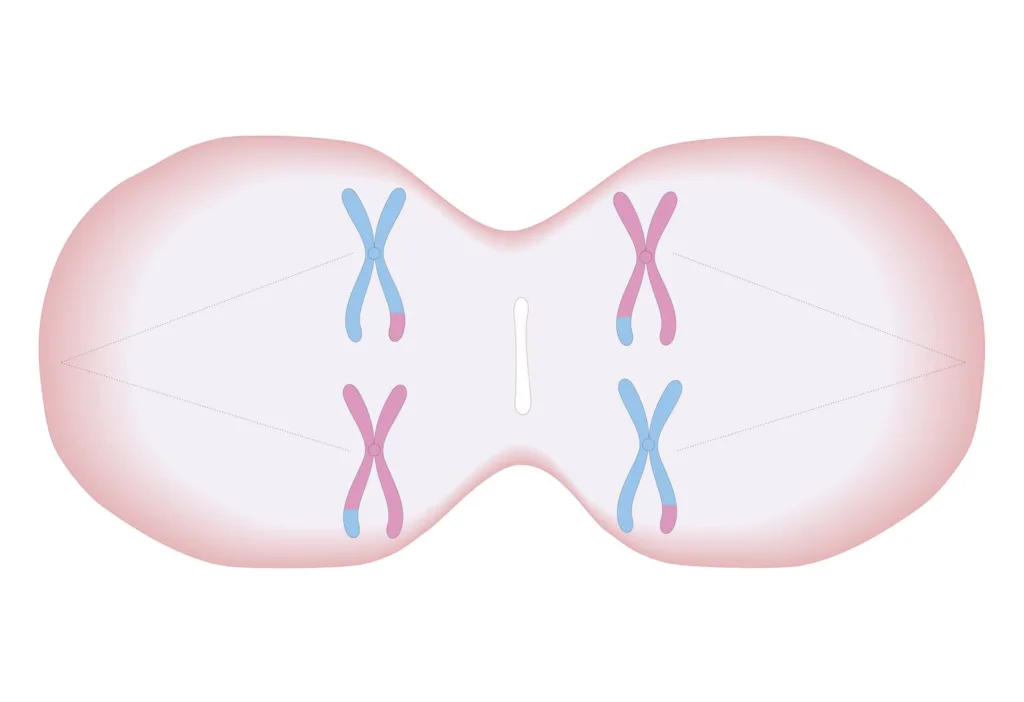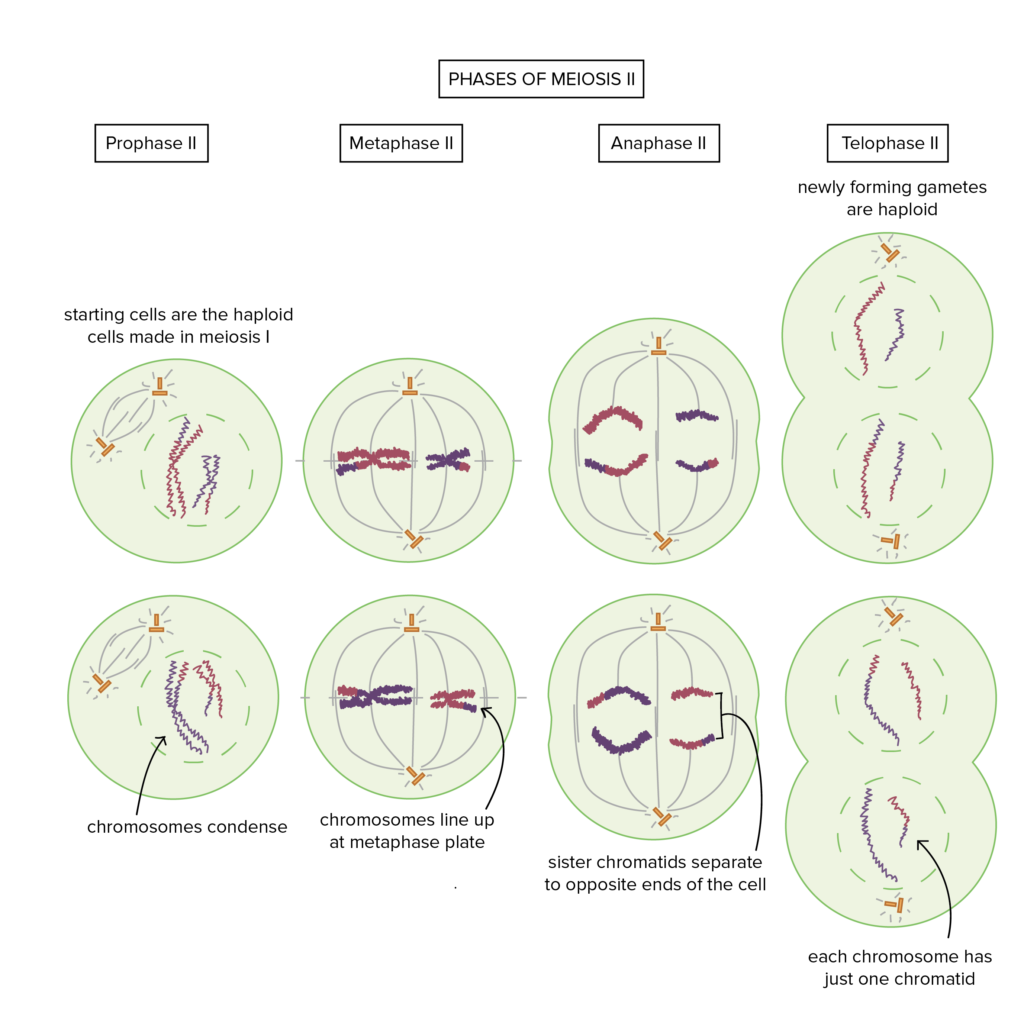Haploid cells are a crucial part of the sexual life cycle of organisms. These cells are responsible for carrying only one set of chromosomes, as opposed to diploid cells that have two sets of chromosomes. Haploid cells are known as gametes, and they are essential for the process of fertilization.
Fertilization is defined as the fusion of two haploid gametes to form a diploid zygote. This process is fundamental to sexual reproduction and is necessary to ensure the genetic diversity of offspring. During fertilization, the sperm and the egg fuse to create a new organism with genetic information from both parents.
It is important to note that fertilization requires two haploid cells, one from each parent. The sperm is the male haploid cell, while the egg is the female haploid cell. Each parent contributes one set of chromosomes, which combines to form a unique genetic code for the offspring.
The process of fertilization is highly regulated to ensure that only one sperm fuses with one egg. If more than one sperm were to fertilize an egg, the resulting zygote would have an abnormal number of chromosomes, which could lead to developmental abnormalities or even miscarriage.
Haploid cells are an integral part of the sexual life cycle of organisms. Fertilization requires two haploid cells, one from each parent, to fuse and form a diploid zygote. This process is essential for ensuring the genetic diversity of offspring and is highly regulated to ensure that only one sperm fuses with one egg.
The Joining of Two Haploid Cells Through Fertilization
Fertilization does join two haploid cells. During fertilization, two haploid gametes, one from each parent, fuse to form a diploid zygote. Each gamete contains half the number of chromosomes as the parent cell, which is why they are considered haploid. When the two haploid gametes fuse during fertilization, they combine their genetic material to create a diploid zygote with a full set of chromosomes. This zygote then undergoes cell division and differentiation to develop into a new organism.

The Cells Involved in Fertilization
During fertilization, two types of cells are involved – the sperm cell and the egg cell. Sperm cells are produced by the male reproductive system and contin half of the genetic material of the male parent. The egg cell, also known as an ovum, is produced by the female reproductive system and contains half of the genetic material of the female parent. When the sperm and egg meet, they undergo a process called fusion, where the genetic material of both cells combine to form a single, diploid zygote. This zygote then begins to divide and differentiate, eventually forming a mature organism. Fertilization is a critical event in sexual reproduction and is essential for the continuation of a species.
Haploid Cells Involved in Fertilization
The haploid cells involved in fertilization are the gametes, which are the reproductive cells of an organism. Gametes are produced by the process of meiosis, which reduces the number of chromosomes in each cell by half. This means that gametes are haploid cells, cntaining only one set of chromosomes instead of the usual two. The female gamete is called an ovum or egg cell, while the male gamete is called a sperm cell. During fertilization, the haploid sperm cell fuses with the haploid egg cell to form a diploid zygote, which contains two sets of chromosomes, one from each parent. This zygote then undergoes mitosis to produce all the cells of the developing organism.
Is Fertilization a Haploid or Diploid Process?
Fertilization is a process that involves the fusion of two haploid gametes, one from the male and the other from the female, resulting in the formation of a diploid cell called a zygote. Therefore, fertilization results in a diploid cell. The zygote contains a complete set of chromosomes, half from each parent, which provides the genetic information for the development of a new individual.
Process of Producing Haploid Cells
The process that produces 2 haploid cells is meiosis. Meiosis is a type of cell division that is involved in the production of gametes, which are sex cells such as sperm and eggs. During meiosis, a single diploid cell undergoes two rounds of division, resulting in the formation of four haploid daughter cells. Each of tese daughter cells contains half the number of chromosomes present in the parent cell, and they are genetically distinct from each other due to the process of genetic recombination that occurs during meiosis. Therefore, meiosis is a crucial process in sexual reproduction that ensures the genetic diversity of offspring.

Are Fertilized Eggs Haploid or Diploid?
Fertilized eggs, also known as zygotes, are diploid. This is because they contain two haploid nuclei, one from the sperm and one from the egg, which combine during fertilization to form a single cell with two sets of chromosomes. The haploid nuclei are called pronuclei and they fuse together to form the zygote’s diploid nucleus, which contains the full complement of genetic material necessay to develop into a complex organism. Therefore, the zygote is the first cell in the development of a new individual and is the starting point for all the subsequent cell divisions that will eventually form a fully developed organism.
Number of Cells Involved in Fertilization
During the first 12 hours after fertilization, there is only one cell present. After approximately 30 hours, the single cell divides into two cells. Another 15 hours later, the two cells divide again, resulting in four cells. By the end of three days, the fertilized egg cell has developed into a berry-like structure consisting of 16 cells. Therefore, in the early stages of fertilization, the number of cells present is either one, two, four, or 16, depending on the specific time frame of development.
Is a Zygote Haploid or Diploid?
A zygote is diploid, meaning it contains two sets of chromosomes. This is because a zygote is produced by the fusion of two haploid gametes, one from each parent. The haploid gametes each contain only one set of chromosomes, but when they combine during fertilization, they create a diploid zygote. This process is a fundamental aspect of sexual reproduction in all organisms except bacteria. So, to summarize, a zygote is diploid, carrying two sets of chromosomes.
Result of Fertilization of Two Sperm Cells and Two Egg Cells
When two sperm cells fertilize two egg cells, the result is fraternal twins. Fraternal twins are formed when each egg is fertilized independently by each sperm, resulting in two separate embryos. These twins are no more genetically similar than any other siblings, as they share approximately 50% of their DNA. This is in contrast to identical twins, where one fertilized egg splits into two embryos, resulting in two individuals with nearly identical DNA.

The Importance of Haploid Cells in Fertilization
Haploid cells are essential in fertilization because they carry half of the genetic informatin required for the formation of a new individual. During fertilization, a haploid sperm cell from the male parent fuses with a haploid egg cell from the female parent to create a diploid zygote. The diploid zygote contains a full set of genetic information required for the development of a new individual. Without haploid cells, fertilization would not be possible, and the genetic diversity of offspring would be limited. Therefore, haploid cells play a crucial role in the process of fertilization, which is fundamental to the continuation of any sexually reproducing species.
The Process of Fertilization and Its Requirement of Haploid Cells
Fertilization is the process of fusion between a haploid sperm cell and a haploid egg cell (oocyte). This results in the formation of a diploid zygote, which contins a complete set of genetic material from both the mother and father.
Haploid cells are necessary for fertilization because they each contain only half of the genetic material required to form a complete human being. During fertilization, the haploid sperm and egg cells combine to restore the diploid number of chromosomes in the resulting zygote. This ensures that the offspring will have the correct number of chromosomes and the necessary genetic information to develop and grow properly.
Additionally, haploid cells are important for genetic diversity. Each haploid cell contains a unique combination of genetic information, which contributes to the genetic variation that is essential for evolution and adaptation. The process of fertilization, therefore, ensures that each new individual has a unique genetic makeup, which is crucial for the survival of a species.
Number of Haploid Cells in an Egg
An egg is a haploid cell, which means that it contais only one set of chromosomes, unlike the diploid cells found in most of our body that contain two sets of chromosomes. The egg is produced from the four haploid cells that result from meiosis, which is a specialized type of cell division that reduces the number of chromosomes in the cell by half. Therefore, there is only one haploid cell in an egg, making it a very large cell compared to other cells in our body. In contrast, a sperm is also a haploid cell but much smaller in size and has a tail for motility.
The Benefits of Fertilization Being Diploid
Fertilization is diploid because it involves the fusion of two gametes, which are haploid cells (containing only one set of chromosomes). The fusion of two haploid gametes during fertilization restores the full complement of chromosomes (one set from each parent) in the resulting zygote. Thus, the zygote is diploid, containing two sets of chromosomes, one from each parent. This diploid state is essential for the proper development and functioning of the resulting organism, as it allos for the expression of all the genes inherited from both parents. Without fertilization and the restoration of the diploid state, the resulting organism would be unable to survive or reproduce.
Haploid Cells That Will Not Be Fertilized
During oogenesis, the process of egg cell development in females, three haploid cells are produced that will not be fertilized by sperm. These three cells are known as polar bodies. The first polar body is produced during meiosis I, when the diploid cell divides into two haploid cells. The scond polar body is produced during meiosis II, when the secondary oocyte divides into a mature ovum and a second polar body. Both first and second polar bodies lack the ability to be fertilized due to their limited cytoplasm and other cellular components. The primary function of polar bodies is to discard the excess genetic material produced during meiosis and ensure that only one haploid ovum with a complete set of chromosomes is available for fertilization by a sperm cell. Therefore, the three haploid cells that will not be fertilized during oogenesis are two first polar bodies and one second polar body.
The Production of a Diploid Cell Through Fertilization
Fertilization is the process by which two haploid gametes, one from the male and one from the female, combine to form a single diploid cell called a zygote. The haploid gametes, which contain only one set of chromosomes each, undergo fusion during fertilization, resulting in the formation of a diploid zygote that contais two sets of chromosomes, one from each parent. This process ensures that the offspring inherit genetic information from both parents, which contributes to their unique characteristics. The zygote then undergoes multiple rounds of cell division through mitosis, resulting in the formation of a multicellular organism that is also diploid. Thus, fertilization is a crucial step in sexual reproduction that produces a diploid cell by combining two haploid gametes, ultimately leading to the formation of a genetically diverse and fully developed organism.
Conclusion
Haploid cells are an essential component of sexual reproduction. They carry only one set of chromosomes, which are produced through meiosis. Haploid cells are the gametes, which are the reproductive cells of organisms. The fusion of two haploid gametes during fertilization results in the formation of a diploid zygote, which is the starting point of prenatal development. The unique genetic makeup of each haploid cell ensures genetic diversity in offspring, which is crucial for the survival of a species. haploid cells play a critical role in sexual reproduction and contribute to the genetic diversity of a population.
